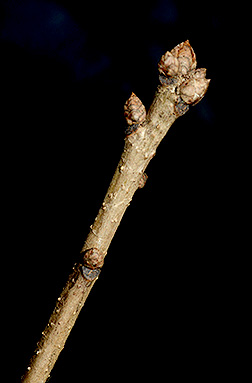bluff oak Fagaceae Quercus austrina
Leaf:Alternate, simple, obovate to elliptical in shape, 3 to 7 inches long; 3 to 7 rounded shallow irregular lobes that reach 1/4 to 1/2 way to the midrib, apex is rounded and the base is wedge-shaped, green to gray-green above and paler below with small stellate hairs that are restricted to the vein axils as the leaf ages; petioles 1/4 inch long.
Flower:Species is monoecious; male flowers are yellow-green, borne in naked, slender catkins, 2 to 4 inches long; female flowers are reddish green and appear as very small single spikes; appearing with the leaves in mid-spring.
Fruit:Ovoid to oblong acorn, cap is warty and bowl-shaped, covers 1/3-1/2 of the fruit; cap always detaches at maturity; matures in one growing season in the early fall.
Twig:Red-brown to somewhat gray, lenticels may become corky, hairless and often shiny; multiple terminal buds are red-brown, conical, slightly pubescent.
Bark:Whitish or ashy gray, scaly, old trees become ridged and furrowed.
Form:A small to medium-size tree to 60 feet with an oval crown.




Notes: